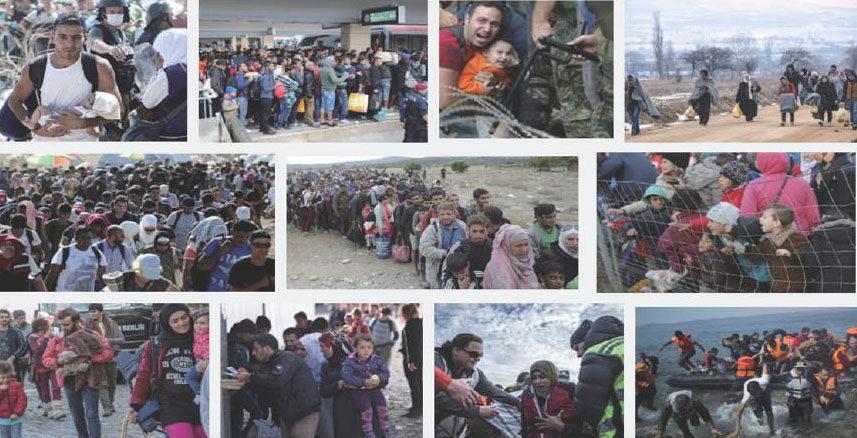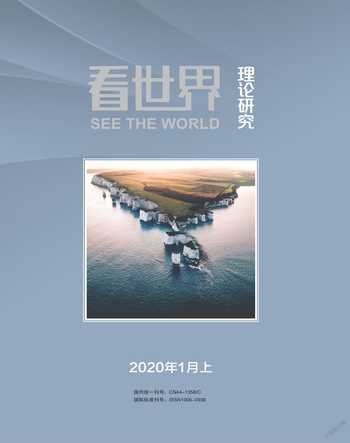Visual Storytelling and Globalization
张淑芳


Introduction
Visual storytelling plays a significant role in news reporting.Images are used in news to help people understand details about news from a different perspective.In this paper,I attempt to discuss whether the relationship between images and truth,or more precisely,whether visual storytelling and images can shape people’s understanding,perception and attitudes,and if so,how it achieve it.
Theory
Stereotype is originated from Greece.The word of “steros” refers to “firm,solid”, and the word of “typos” means “impression”.In together,“stereotype” means “solid impression on one or more idea/theory”.[1] Walter Lippmann,the famous American journalist and journalism scholar,held in his book Public Opinion in 1992 that “early researchers believed that stereotypes were inaccurate representations of reality.”[2] (Katz,Daniel;Braley,Kenneth,1933).Stereotype exerts its influence by cultivating people’s certain opinions and bias towards some certain social groups.In this paper,I will further illustrate this point by analyzing stereotypes caused by the images of refugee crisis.
Case Study of the European Refugee Crisis
1.Whether news images of the European Refugee Crisis reveal the Truth
The news[3] above about the European refugee crisis may lead most people to have the tendency of believing that it showed the refugees with an ISIS flag were attacking policemen.However,the image actually was about strike in Germany in 2012.More importantly,at that time,ISIS has not yet emerged as an evil power.Therefore,the picture isn’t telling the true story.
2.Whether the Images of the European Refugee Crisis Can Shape People’s Understanding, Perception and Attitudes towards the Refugees
After reading the news and picture above, peoplemay feel angry about refugees,for the flag may indicate them being a member of ISIS,which then further leadto greater resistanceagainst refugees migration to Europe due totheir fear and hatred. On the other hand,European governments would make policies to protect their countries and deport refugees.In this light,images can shape people’s understanding,perception and attitudes towards the refugees.
The image of a little boy’s death may be employed to further illustrate this point.
The image shows that in 2nd of Sep, 2015,a three-year-old Syrian boy died on the beach of Turkey.It was widely circulated around the world.Lots of people viewing the image believe the boy would never wake up.It aroused people’s attention to the European refugee crisis.There is no denying that the death of a little boy is a tragedy,but the fact was that thousands of refugees died in the Mediterranean Sea before the picture was taken.It may lead us to reflect on why people didn’t equal attention to European refugee crisis before the picture was released.One possible explanation is a powerful pictures like this may make the change.Therefore,images are very critical in shaping people’s views and calling upon people’s emotions.
3.How Images Shape People’s Understanding
Firstly,images can cause wrong stereotypes that can distort people’s understanding and emotions.Googling “refugee”,readers may find many images as follows:
Most of these pictures depict refugees as poor people who are desperate to seek for water,food and shelter.These images naturally caused certain stereotype in people’s minds.Namely, people link refugees with the poor pictures.However,there are many refugees who are not poor at all.On the contrary,they were rich,respectful,received high education and come from the middle/upper class.
For example,the picture above shows a rich Mexican family who are fleeing to Canada as refugees. [4] It may subvert people’s stereotypes about refugees.
In most cases,obviously people’s minds will not be shaped or distorted by one single image.It is the number of pictures with certain ideology that decide people’s understanding,even when most of the pictures are not telling a well-rounded story.
Secondly,images from journalists and photographers can affect people’s understanding,not because they are independent,neutral and revealthe truth themselves,but because they represent the truth from the view of journalists and photographers.
The making of a picture may depend on the journalists and photographers’ backgrounds,religious beliefs,nationalities and environments where they grow up. Reviewing the pictures in the first and the second part of my thesis,it may be found that one shows refugees who are fearful of terrorists,while the other shows refugees who are pitiful and eager for help.These are emotions that the photographers and journalists construct for their readers.However,don’t forget the other side of the story.Unfortunately,neither of the two pictures shows the two side.They both only insist in displaying the only side that the journalists and photographers want us to see.
So pictures are product of construction rather thanthe natural being. It is man-made,and man-made products certainly will be affected by people’s different thoughts.
Thirdly,“Stereotypes concerning political affiliation and nationality are much less accurate.” [5]
For example,Hungarian TV banned images of refugee children,because the government want to limit public sympathy towards refugees. [6]
In different countries in Europe,the attitudes towards the refugees are different.For example,France and other west European countries are willing to accept refugees,while east European countries and Greece are not willing to do so. [7]
So the images we see are chosen by governments or groups of interests.In this light,the intentions in pictures can shape people’s attitudes towards the news.
Conclusion
Images are not automatically the truth, on the contrary,they are constructed by human beings.They are the truth that journalist and photographers want us to know.In the case study of European Refugee Crisis,the conclusion is that images can shape people’s understanding,perception and attitudes because(1)images can cause wrong stereotypes;(2)pictures taken by journalists and photographers contain their own understandings towards certain issues and;(3)different intentions in images that are taken by different groups of interests also matters.
References
[1] https://en.wikipedia.org/wiki/Stereotype#Accuracy
[2] Katz, Daniel; Braley, Kenneth (1933). “Racial stereotypes ofonehundredcollegestudents”. The Journal of Abnormal andSocialPsychology 28 (3): 2808 (3. doi:10.1037/h0074049
[3] http://www.independent.co.uk/news/world/europe/the-fake-refugee-images-that-are-being-used-to-distort-public-opinion-on-asylum-seekers-10503703.html
[4] http://www.macleans.ca/news/canada/wealth-asylum/
[5]Jussim, Lee; Cain, Thomas R.; Crawford, Jarret T.; Harber, Kent; Cohen, Florette (2009).“The unbearableaccuracyof stereotypes”. In Nelson, Todd D. Handbook ofprejudice, stereotyping, anddiscrimination. New York: Psychology Press. pp.Press. pp.ISBN 978-0-8058-5952-2.
[6]http://www.theguardian.com/world/2015/sep/01/hungarian-media-told-not-to-broadcast-images-refugee-children-memo
[7]http://www.chinanews.com/gj/2015/09-22/7538200.shtml

